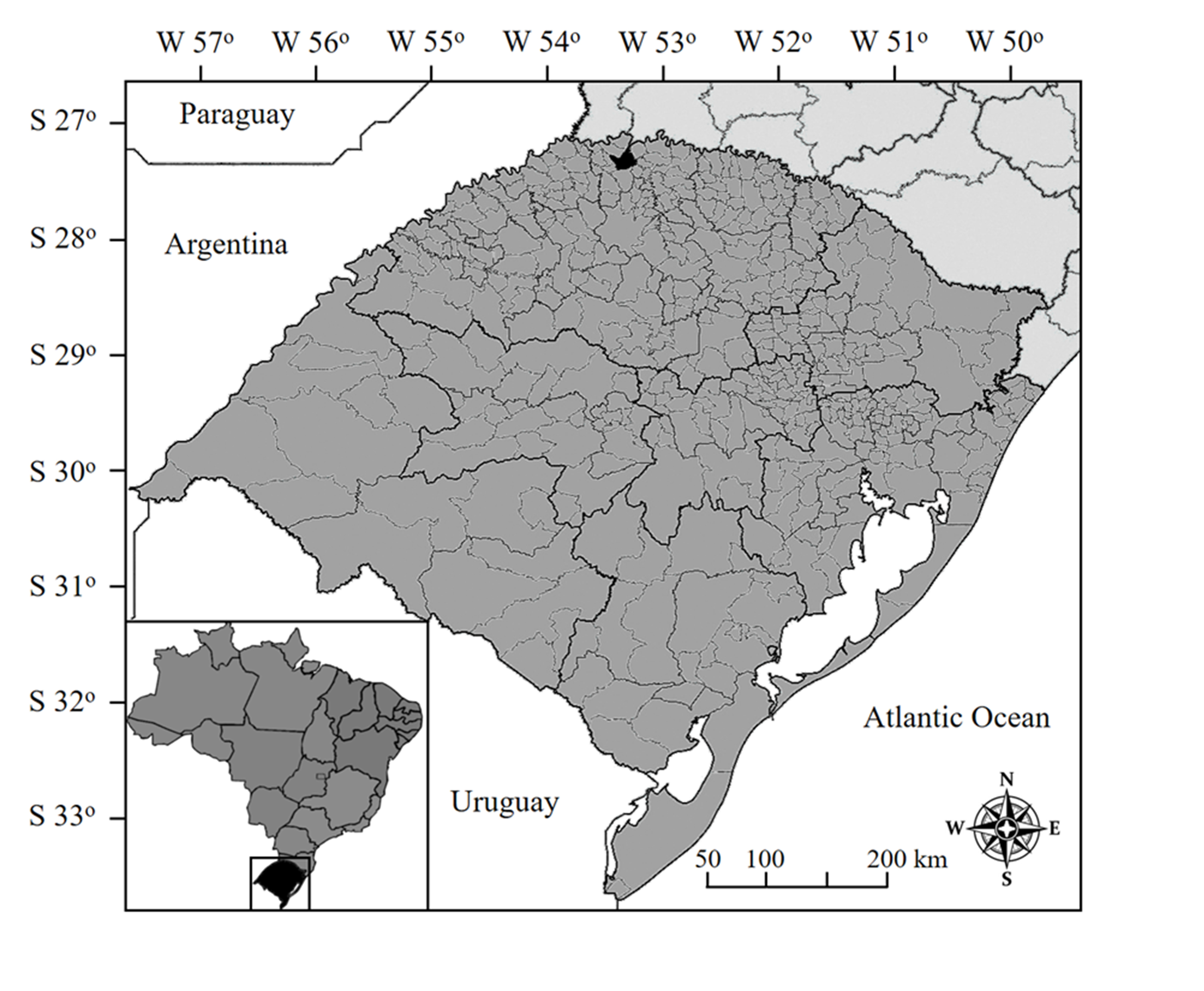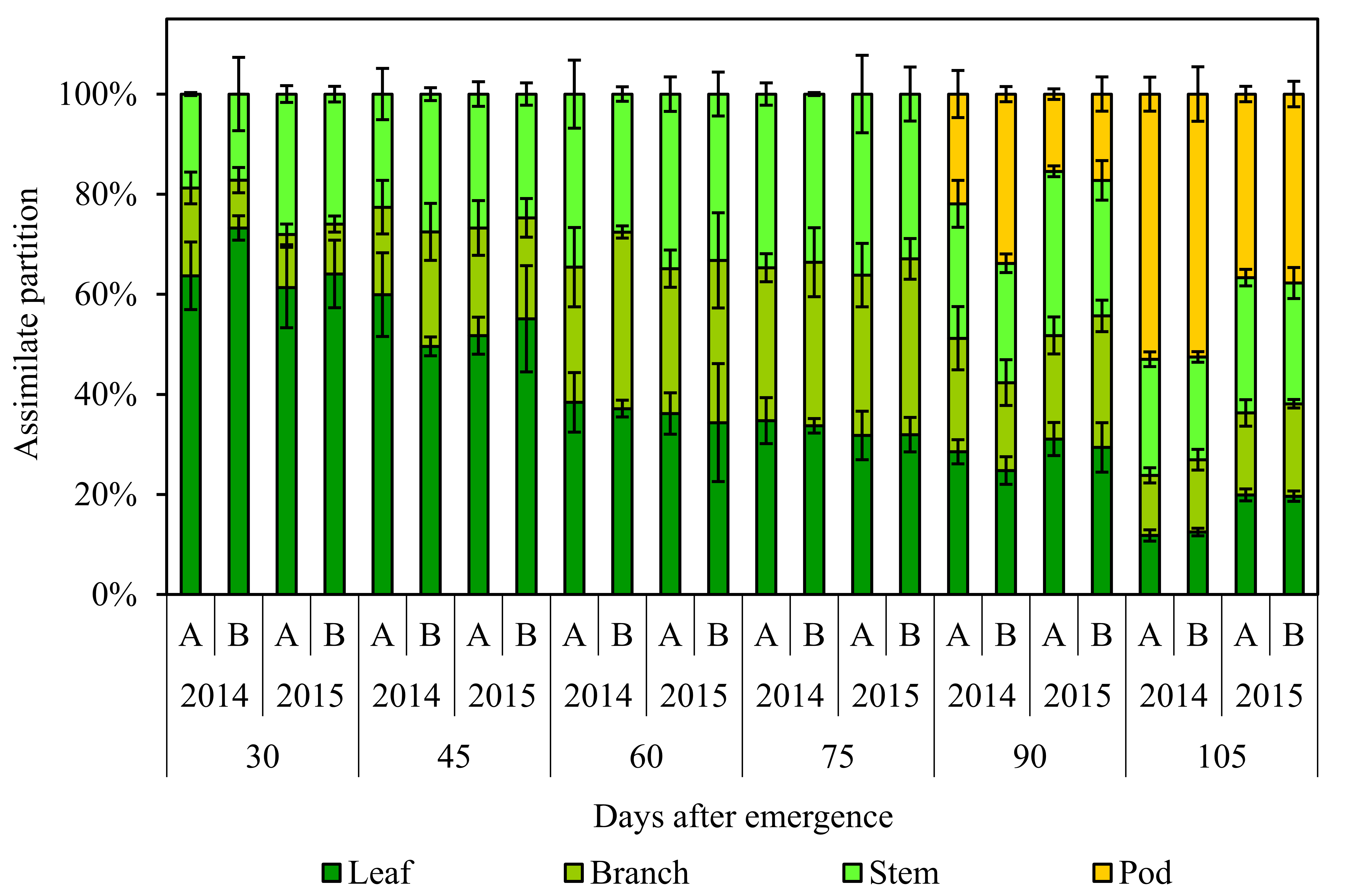Abstract: Despite its economic importance, the microclimate in soybean canopies has not yet been studied in detail. Such a study can yield valuable information regarding the interaction of a crop with its environment. In this context, the aim of this study was to evaluate the solar radiation dynamic and yield responses for each canopy strata for two soybean cultivars with determined and undetermined growth habits. A field study was conducted during the 2013/2014 and 2014/2015 growing seasons in the city of Frederico Westphalen, Rio Grande do Sul, Brazil. The cultivar NA6411, with a determinate growth habit, presented a greater interception of radiation in the middle and lower canopies strata which results in higher soybean yield when compared to the cultivar TEC6029, and thus, can be recommended for cultivation in crop production systems. The contribution of the middle and upper canopy strata to the total yield formation was greater than that observed in the lower canopy strata due to the greater interception of solar radiation by these strata. To increase soybean yields, new studies regarding the microclimatic conditions of the soybean canopy should be developed to improve the maximum potential yield of the new soybean cultivars.
Key words
canopy architecture; Glycine max L.; radiation use efficiency; extinction coefficient

 Thumbnail
Thumbnail
 Thumbnail
Thumbnail
 Thumbnail
Thumbnail
 Thumbnail
Thumbnail
 Thumbnail
Thumbnail
 Thumbnail
Thumbnail
 Thumbnail
Thumbnail






